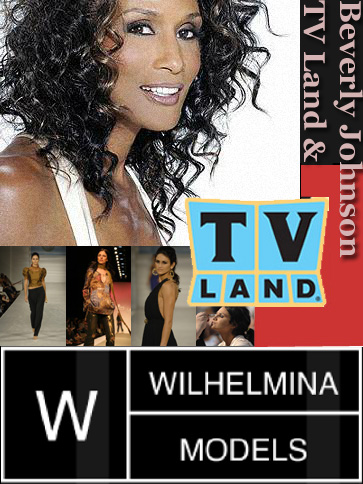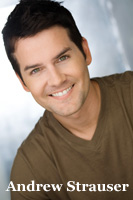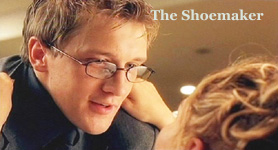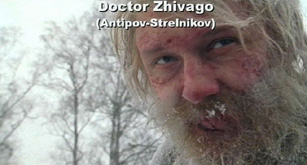Tag: Kaylene Peoples
Ash Gupta – Internationally Known Photographer and Founder of the Progressive Studio 838
Ash Gupta – Photographer and Founder of the Progressive Studio 838
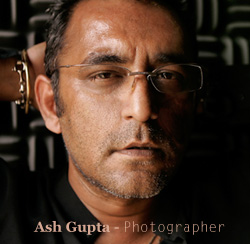 Indian-born photographer Ash Gupta is a celebrated, internationally known photographer who has made his home in Los Angeles, but is very much in demand around the globe. He has photographed top models, celebrities, including Elizabeth Shue, Sharon Lee, Dominique Swain, and Davis Guggenheim, just to name a few. Ash came from a small town in India, and emerged from a very traditional orthodox business class family. He was very young, just 15 years old, when he got involved in commercial theater and met a group of friends who happened to paint. He tried painting, too, but realized that the soul was missing. And through this quest he found his way to photography.
Indian-born photographer Ash Gupta is a celebrated, internationally known photographer who has made his home in Los Angeles, but is very much in demand around the globe. He has photographed top models, celebrities, including Elizabeth Shue, Sharon Lee, Dominique Swain, and Davis Guggenheim, just to name a few. Ash came from a small town in India, and emerged from a very traditional orthodox business class family. He was very young, just 15 years old, when he got involved in commercial theater and met a group of friends who happened to paint. He tried painting, too, but realized that the soul was missing. And through this quest he found his way to photography.
“Actually my father did have an inclination toward photography and used to own some old Rolleiflex [cameras]. When my parents were vacationing, I tried to put my hands on the cameras and open them up. All the springs popped out and I was grounded. But that was my first introduction to photography. And since then, I do not think a camera has ever left my sight.”
Ash is the founder of Studio 838, a platform for talented young photographers. He realized that many photographers went through vigorous college training but were lacking certain critical elements. Many of these graduates were not prepared to handle real world experiences. The photographers were hand-picked, and would soon become a part of an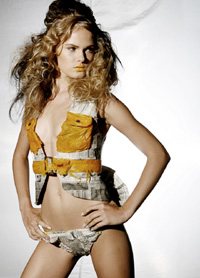 important discussion group, a group that would dissect and embrace the art form. Its main focus? Commercial photography. These photographers became part of a family, Studio 838.
important discussion group, a group that would dissect and embrace the art form. Its main focus? Commercial photography. These photographers became part of a family, Studio 838.
“When I started shooting commercially, first assisting and interning, I met photographers who were very well trained, having the proper discipline, as well as being graduates from special schools. I realized that they had problems coping with real life. They knew how to shoot, but didn’t know what to shoot—the college didn’t teach that. We started grouping very talented photographers and concentrated on commercial fashion. This was the start of Studio 838.”
—Ash Gupta, Photographer—
How long ago did you start the network? Is that what you call it, a network?
I call it a platform because I have my connections in photography and commercial media all the way to Southeast Asia. Since I moved to Los Angeles [15 years ago], I started meeting photographers. I assisted some very powerful names in the industry. But the real execution of the studio and the first group of photographers that I trained happened in 2003. I later realized that these photographers would eventually assist me. They’d move on because total emphasis was fashion [photography] as a fine art. I had already trained two groups of photographers, and just when the third group was about to enter the premises, I realized that the studio needed to concentrate on commercial ventures. So the photographers I was training could actually stay here and make a living. And now we are all working towards the same goal—to take over the commercial market in Los Angeles.
Have there been any challenges while trying to put together this group of photographers you’re working with now?
The biggest challenge was to put a group of artists together. Egos are the biggest thing—they’re very fragile. [For the most part], artists are not very vocal people, and to teach them how to express themselves in a group can be very difficult, especially when you deal with our directors, management companies, publicists, designers, and the people involved with the fashion industry in general. Because everybody has massive egos, blending them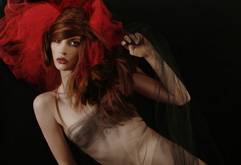 together is very difficult. But once we achieved that successfully, they needed to learn how to react to the outside world. And because it is not an MBA course, it’s something that has to be dealt with on a regular basis.
together is very difficult. But once we achieved that successfully, they needed to learn how to react to the outside world. And because it is not an MBA course, it’s something that has to be dealt with on a regular basis.
How many photographers do you have in your group right now?
We like to have two or three photographers and two interns at a given time. It is a platform for photographers who have a professional place to launch their careers.
It’s almost like an apprenticeship.
It’s more like a house for photographers whose sources are enviable.
What don’t you accept in a potential applicant? What is the one thing that would make you go, “This person can not qualify for this program“?
Somebody who is not a really good team player.
How could you find that out?
A person who is a team player makes sure that the job has been divided. Suppose someone has to produce a shoot. Those interpersonal skills with other people should be very enterprising, not be scared of challenges. “No” is definitely not an answer. Once you’re a team player, you start trusting your teammates, and that trust is embedded in you.
Did you have a high turnover when you first started this platform?
Actually, not really. I really like people. That’s the reason I work with people—it’s chosen by the people for the people.
So you have a “Photography Democracy.” So where do you see this platform in five years?
I see it as a very strong commercial venue. At the same time, I see it as a very strong platform for launching the upcoming young talents. We want to have our own branding, and wherever the 838 name is put, it should be all about quality.
That was very enterprising of you to start this, and obviously there is a passion in you. Is it because of what you went through personally as a photographer that made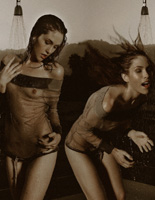 you feel that this platform was necessary for other photographers coming up?
you feel that this platform was necessary for other photographers coming up?
There are some professions that you can do by yourself, and there some professions where you need a group. Motion film is not a one person’s job. Good or bad depends on the team you put together—casting matters a lot.
How did you get started?
I started at a young age and from a very strange scenario. I came from a family that had nothing to do with fashion, but I was always interested in anything my background did not have to offer me.
Had you shot anything of note before you moved to L.A.? What did you shoot?
I was shooting a lot of everything, but I realized that I was more interested in people because a lot of families wanted me to shoot their portraits. While in India, I had a friend whose dad used to be senior executive for a fashion company. One day, their main photographer was unavailable. They asked me if I had a camera and could I take pictures for them. So I took 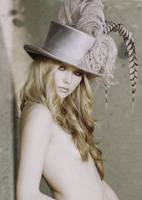 some pictures, and three weeks later, I got a pretty fat check in the mail. And for the first time I realized, “Wow, you can do it this way, too!” You could make a very lucrative living because that money was too much for that particular time, and suddenly my avenues changed. I got to know more local agencies. I started making friends with the art directors and the commercial clients. Slowly, it converted into a business.
some pictures, and three weeks later, I got a pretty fat check in the mail. And for the first time I realized, “Wow, you can do it this way, too!” You could make a very lucrative living because that money was too much for that particular time, and suddenly my avenues changed. I got to know more local agencies. I started making friends with the art directors and the commercial clients. Slowly, it converted into a business.
Back in the 80s, there was a lot of peer pressure to get an education. Get a master’s degree. Become a doctor or lawyer or engineer. Fashion Photography was not a classified designation to do what you do as a fashion photographer. Not in India in the 1980s.
Maybe you paved the way a little bit?
We were definitely the first ones who started an era of fashion.
So you are a pioneer. You are a maverick. Do you think that because you come from a family that is very orthodox, business related, this is what spurred you on, and maybe why you are so enterprising in creating your own platform for photographers? Because that is a business.
Yes, but whatever is inside of me is no different from what you’re thinking. If I needed to stay in business, I would have stayed with my dad. I have this feeling that people should not suffer the way I suffered. We had no mentor. We had no direction. We didn’t know how to rest. The new generation should not be lacking anything. They don’t have anybody; they should have role models; they should be more vocal; and they should be accessible.
What made you decide to come to America?
To be honest, my telephone bill to America [It was costing more than an airline ticket]. My girlfriend was here for almost a year, and we used to talk a lot on the phone. Someone suggested I should fly instead of hiking up my bills. So I did come to New York.
So how long did you stay in New York?
I actually stayed for two and a half years because three months of my visit, we decided to get married. So I got married in a small town. She was studying at Cornell; and that was a totally new and different life after that.
So you did a lot of Fashion Photography in New York, which is high fashion central?
I connected myself to Cornell Design League, which is an in-house advertising fashion agency of Cornell. And they have a fashion school there. I was involved with them, but then 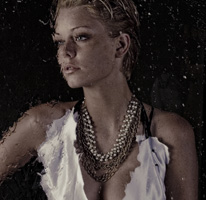 we [my wife and I] had two choices, move to New York City or to Los Angeles; and I don’t know … it was 16 or 17 years back … what tempted me to come to Los Angeles—perhaps the weather, because it was closer to my home country, India. And we moved to Los Angeles instead of going to New York, a decision I do not know whether I regret or I am happy about. But Los Angeles feels like home now, and I’ve been living here for the last 16 years.
we [my wife and I] had two choices, move to New York City or to Los Angeles; and I don’t know … it was 16 or 17 years back … what tempted me to come to Los Angeles—perhaps the weather, because it was closer to my home country, India. And we moved to Los Angeles instead of going to New York, a decision I do not know whether I regret or I am happy about. But Los Angeles feels like home now, and I’ve been living here for the last 16 years.
How is the fashion in America different from that in India?
Actually, it is not. Only commercialization and branding of fashion is different, but fashion is fashion, and its purest form is going to be fashion. In Africa it’s going be fashion. In Eastern Europe it’s going to be fashion. In Milan, Paris, etc… And it is always going to be in India. But the branding and the corporate ladders … things are different. Their campaigns are on a bigger level, and there is bigger business in America.
Lowest Low
My lowest low was moving to Los Angeles from a small town in New York, thinking that I am good enough. When I moved here, my wife was an exchange professor. And as her spouse, the visa requirement required me to accept any position of employment—I could work for free. I thought wow, I’ll find a photographer and I’ll assist him, and only photographers in Los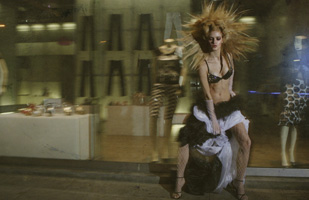 Angeles were allowed. I sent at least 250 resumes within a week, and I couldn’t meet a single photographer. They were so busy, and I was very frustrated because I was not asking for any money. That I think was the lowest low of my life, but it didn’t last more than a week. A man has to do what a man has to do. So I made friends, and I got to know some photographers that way; and I broke in.
Angeles were allowed. I sent at least 250 resumes within a week, and I couldn’t meet a single photographer. They were so busy, and I was very frustrated because I was not asking for any money. That I think was the lowest low of my life, but it didn’t last more than a week. A man has to do what a man has to do. So I made friends, and I got to know some photographers that way; and I broke in.
Highest High?
My first photo shoot where I wasn‘t assisting. It was my first celebrity, Bruce Lee‘s daughter, Sharon Lee. I knew Bruce Lee very well, because my younger brother is a big fan of his, as well as being a martial artist himself. I grew up with Bruce Lee’s books and Bruce Lee’s posters in my house in India. When I was supposed to shoot her, I was very nervous. It was a very amazing feeling. I remember I couldn’t sleep, and I was so tired in the morning, but I was very happy and I was just flying.
What advice would you give to an aspiring photographer as a mentor that you are?
Do more homework before you jump into it. Are they photographing a model or are they photographing the ensemble on the model? They have to love the people in every shape and form, especially if they want to work with people. You can not be a people hater and work 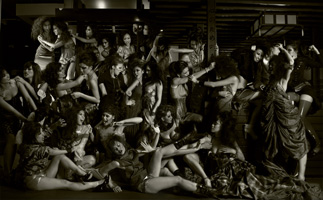 with people. Fashion photography is a very people-oriented career. There is a lot of ego pampering involved. Fashion and people are the only genres of photography where your personality counts for 50 percent of the work which you produce. They need to work on their interpersonal skills and make the other person very comfortable.
with people. Fashion photography is a very people-oriented career. There is a lot of ego pampering involved. Fashion and people are the only genres of photography where your personality counts for 50 percent of the work which you produce. They need to work on their interpersonal skills and make the other person very comfortable.
Can you tell me in one sentence what is particularly unique about your technique as a photographer?
My subject is more important than my technique, and I am working on some very interesting subject matters.
So you are more interested in bringing up the quality of the subject as opposed to infusing your technique into the actual picture?
If you’re emphasizing on technique, I have always felt this quest and to shoot people through a medium where photography can be treated like a fine art.
As Agenda Magazine‘s guest photographer, Ash Gupta will be contributing fashion editorials and cover shots in our upcoming issues. To learn more about Ash Gupta and Studio 838, visitwww.studio838.com.
Interviewed by Kaylene Peoples
YogaFit’s Founder Beth Shaw – Making a Difference in the Fitness Industry
YogaFit’s Founder Beth Shaw – Making a Difference in the Yoga Industry
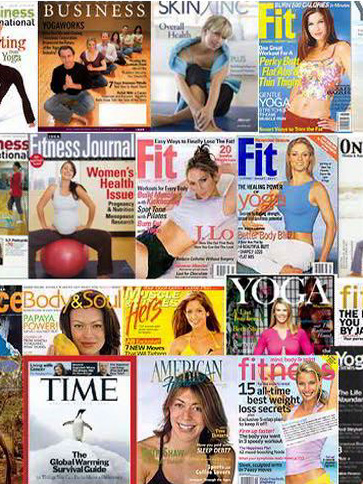 From high intensity classes like Tae-Bo and Spinning to lower impact, stress-reducing activities such as Pilates and Tai-chi, fitness has evolved from an exercise to a lifestyle. But no other form of exercise has changed the fitness world more than the practice of yoga. Beth Shaw is recognized throughout the United States, and internationally, as one of the leading experts in the fitness industry. She graduated with a B.S. in Marketing from Long Island University, then made her home on the West Coast.
From high intensity classes like Tae-Bo and Spinning to lower impact, stress-reducing activities such as Pilates and Tai-chi, fitness has evolved from an exercise to a lifestyle. But no other form of exercise has changed the fitness world more than the practice of yoga. Beth Shaw is recognized throughout the United States, and internationally, as one of the leading experts in the fitness industry. She graduated with a B.S. in Marketing from Long Island University, then made her home on the West Coast.
Shaw is certified in White Lotus Hatha Yoga and Integrative Yoga. As she began teaching yoga and quickly discovered that traditional methods didn’t meet the needs of the fitness club clientele, YogaFit was born. Her unique blend of yoga, strength training, and stretching took the fitness industry by storm; and in 1997, just three years after its inception, YogaFit began training instructors nationwide. Today, there are more than 50,000 YogaFit instructors in the United States and thousands more in Europe, Turkey, Australia, China, and South America.
I visited Beth Shaw’s recently and listened while she shared some of her health tips as well as her business successes.
What made you decide to get into Yoga and create a school?
I have been working out since I was fifteen, and I’ve always loved the health club environment; so when I decided to get trained in Yoga and went through a couple of traditional trainings, I found that they really didn’t meet the needs of the health club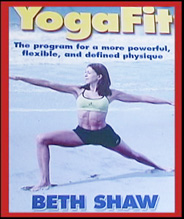 participant. So I created YogaFit, which is a user-friendly fitness-oriented user style of Yoga. And the company has grown really fast and very internationally.
participant. So I created YogaFit, which is a user-friendly fitness-oriented user style of Yoga. And the company has grown really fast and very internationally.
What is User-Friendly?
It means that we modify and we make yoga accessible to every different body style and body type to any level of fitness or injury level.
I used to go the gym, and now I have equipment at home. I went to a yoga class maybe twice. Do you think this is becoming a more popular way of exercising now?
It’s definitely becoming more popular. A lot of people are tired of beating up their bodies, and they are looking for something that is going to give them the current body type that is in vogue, which is a longer, leaner look, instead of more muscular.
How did you get started?
I started out of my living room in the early 90s. I was teaching YogaFit-style classes at the major health clubs in Los Angeles. One of my students invested working capital into the business, and I was selling my t-shirts and yoga mats out of the back of my car. I did a cable TV show called “Yoga Fit” that was running some mail order clothing ads. Just doing a bunch of different things, and planted some seeds. Some sprouted and others didn’t.
Tell me about your line then.
We’ve got a full line of yoga clothing. We’ve got a new line of organic clothing, too, that’s sustainable. The fabrics are made from bamboo.
What do your clothes retail for?
They retail anywhere from $59 – $90.
Your actual process of teaching yoga, you said you cater to the individual, is there anything you’d like to share when you’re working with that person?
Well, we really focus on the essence of the practice, not just the physical form, but what they should be feeling in their bodies. And we also emphasize that people should feel, they should breathe, they should let go of judgment, expectation and competition and really listen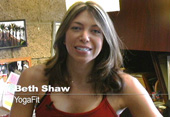 to their bodies and celebrate the bodies that they’re in. You know their yoga
to their bodies and celebrate the bodies that they’re in. You know their yoga
Practice, or any kind of movement, should first and foremost be safe, but it should also be a celebration of music and breath and movement and sweat.
What age ranges are actually doing yoga today?
Anywhere from 6 to 96.
You also have schools all over the country?
We do. We have partner schools all over the country and we do a lot of our training in health and fitness clubs around the country.
What were some of the highs in creating this empire?
For me, the high is going out on the road, meeting the client, going to one of our mind/ body fitness conferences, getting to lead a class, going on to a health club, teaching master class, getting publicity, and getting the brand out there.
Have you had any pitfalls in trying to create this?
I think the trick in creating a business is to make more good choices than bad, but I’ve definitely made some mistakes and had some heartache along the way. I guess any good business owner would say the same thing.
None you’d like to share?
I made some hiring mistakes. I have made some personal mistakes along the way. You learn from your mistakes. Hopefully, they’re not so bad that you can’t rebound from them and you kind of learn as you go. That becomes the exciting part, it becomes almost a spiritual practice for me. To learn life lessons and keep moving forward.
I guess that’s part of the yoga experience.
And the business of yoga adds a whole new dimension to that.
Explain to the lay person that doesn’t know what yoga really is, and has shied away from it because it’s more the metaphysical/spiritual side of things as opposed to the weight lifting side of things. To someone who is completely unfamiliar with this process and what this is, how would you explain this?
It’s a series of movements: Yoga postures combined with breathing in a flowing, heat-building way that works your body, helps relax your mind. So it’s like your body gets a workout, and your mind gets a mini vacation.
Do you do chants as well?
In our advanced level trainings, yes, we do. But in a normal yogaFit class, you will not find Sanskrit, and you will not find chanting.
Yoga goes as far back as the centuries, right?
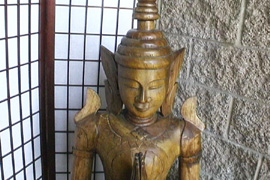 A 6,000-year secret to health to health and vitality.
A 6,000-year secret to health to health and vitality.
For someone who is out of shape, or who wants to get in vogue with their body this season, or just whatever’s in, how long does something like that take? For instance, somebody who’s 30 or 40 pounds overweight? How long does it take before they start to see results?
They’ll start to see positive results within a week to two weeks. They’ll feel better. They’ll notice that their eating habits change dramatically because they’re getting in touch with their bodies. They’ll notice their back feels better. They’ll have more core center strength. Perhaps they’ll see a bicep or two. And they’ll just feel better from the breath and the focus, and giving themselves time for their body. That’s something in our society today—people do not give their bodies the time that they need. And also, not just going to the gym and lifting weights and running around, but bringing your mind into your body and then giving yourself that time. It really adds a whole new dimension to what fitness truly is.
It probably makes people want to go. For me, I stopped going to the gym. I just work out at home now. Going to the gym for me is not very fulfilling.
And that’s where the yoga becomes much more fulfilling than traditional fitness.
How much does it cost to join your program?
Well, we have advanced level trainings and basic trainings. And a weekend training would be about $300. And they’ll learn the basics of yoga, how to improve their own practice. How to create a practice that is tailored for their body. And also how to be safe and have fun along the way.
What advice would you give someone who’s trying to get their body into shape?
First, I would say just move your body for an hour a day. Go out and do three 20-minute walks, do some yoga, do any kind of movement. People need to get in the habit of moving. Our bodies were made to move. Our minds forget that. I would also say start making portion control a priority. When you get a meal, cut it in half right away. Put half aside for lunch the next day. And start to get your stomach accustomed to just eating less. And make better food choices.
You were even saying that after someone has been in the program for a couple of weeks, they have changes to their eating habits on their own.
That’s the nice thing about yoga. Getting in touch with your body, you don’t have to force yourself to make changes. They happen naturally.
Is there anything you’d like to add?
Yes. Remember any movement is good movement as long as it’s safe movement.
Shaw has been published in numerous fitness, business and consumer publications including SELF, FIT, Yoga Journal, Club Business International and LA Parent. Her book, Beth Shaw’s YogaFit, is a best seller among Human Kinetics titles. Shaw has been featured on ABC News, the Style Network, CNN, Showtime, Canada AM, and the KCBS talk show Woman to Woman.
For more information about YogaFit and Beth Shaw, visit her website at www.yogafit.com.
Interviewed by Kaylene Peoples
Eileen Galindo, Actress and Voice-Over Artist – Taking Part in Webisodes, the New Wave of the Future.
Eileen Galindo, Actress and Voice-Over Artist – Taking Part in Webisodes, the New Wave of the Future.
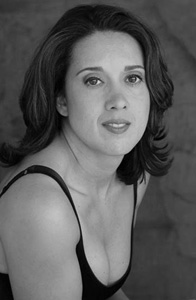 Eileen Galindo is an actress who has appeared in several TV shows and films, including The Super, “NYPD Blue,” “Strong Medicine,” “ER,” “Girlfriends,” “Third Watch,” “Law & Order,” etc. She is also a successful voice-over artist and has performed in “Dora the Explorer,” “In Justice,” and “Phineas and Ferb.” Her theater work is extensive, as she has appeared in the following plays: “Romeo and Juliet,” “Real Women Have Curves,” etc.
Eileen Galindo is an actress who has appeared in several TV shows and films, including The Super, “NYPD Blue,” “Strong Medicine,” “ER,” “Girlfriends,” “Third Watch,” “Law & Order,” etc. She is also a successful voice-over artist and has performed in “Dora the Explorer,” “In Justice,” and “Phineas and Ferb.” Her theater work is extensive, as she has appeared in the following plays: “Romeo and Juliet,” “Real Women Have Curves,” etc.
I visited Eileen at her home in Los Angeles and she spoke of her experiences as a voice-over artist, an actress, and the business in general.
You’re on an Internet show?
I’m doing a show called “In the Motherhood.” It airs on inthemotherhood.com. It stars Leah Remedy, Chelsea Handler, and me; and Lanie Kazane plays the mom. Webisodes are growing in our market. They are finding a way to tie in content with products. For example, my character, Maria, is talking about the trouble she’s having with her life and is talking on her Sprint cell phone.
What is a webisode?
It is written just like a regular sitcom about five minutes in length, and they cut to consumer-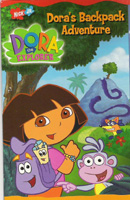 generated products.
generated products.
You’re also a voice-over actress?
I do a lot of cartoons. I play the mom on “Dora the Explorer” on Nickelodeon CBS, “Phineas and Ferb” from the directors of “Sponge Bob Square Pants” and “Hey Arnold“. This one‘s about two little boys and their little adventures. I play a nosy next-door neighbor. It’s a lot of fun. You get to use your imagination. Your voices are matched to a cartoon character, and you get to hide behind the animation.
How did you get into that?
I’ve always done voices since I was a little kid. My parents gave me a tape recorder. I would do radio dramas. (Eileen knocks on something and shouts, “Who’s there?“) I would do the shoes climbing up the stairs. I would do the whole thing. Pretty much I lived in my mind. A lot of voice-over artists live in their heads. You can do a whole cartoon yourself.
So in order to be a voice over artist, you have to be borderline schizophrenic?
It helps, and to be un-medicated. I also do commercials. I have accounts for Suburu, Burger King, etc. Every job seems to top itself. I learn something from everything I do. My philosophy towards acting and being in this business is that I enjoy the work when it’s there.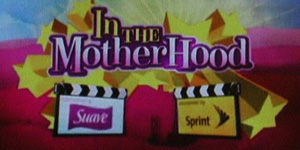 And when it’s not there, I’m always looking for the next job. I pretty much don’t focus on the down time. I’ve got real estate investments, voice-over work … there is always something I have to do.
And when it’s not there, I’m always looking for the next job. I pretty much don’t focus on the down time. I’ve got real estate investments, voice-over work … there is always something I have to do.
What advice would you give to somebody trying to make it in this industry?
I fall into a category I think the most important thing is to work on your craft and to be cordial and friendly with everyone you work with. Because the same people you see on the way up are the same people you’ll see on the way down. Just try to be as professional as possible. And try not to take it too personal. When you don’t get chosen for a project, it’s not anything personal. I look at it this way. It’s apples and oranges. I try to be the best orange I can be. If they’re picking an apple, I’m not going to be picked, but if they’re picking an orange that day, I try to be the best orange available that they are going to pick me out of the lot. Or give them something that they weren’t looking for so they can change their minds.
As an actress/voice-over artist, in order for you to get work, do you need an agent or is it something you do on your own?
Yes. A lot of people think I have only one agent. I actually have fifteen agents. When you add up all the agencies. I work with three different agencies, one on the West Coast and one on the East Coast. When you count all of the agents, agents alone are fifteen, not including assistants. Each agent has an assistant. I deal with about thirty people a week, depending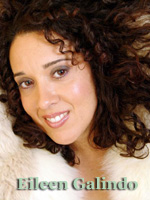 on what the project is. That’s how you keep working. Get with agencies that are a fair size. It doesn’t have to be with ICM to get full coverage or representation. I have one agency that just represents me for voice-overs, another one that represents me for commercials, and another one that represents me for television, film, and theater.
on what the project is. That’s how you keep working. Get with agencies that are a fair size. It doesn’t have to be with ICM to get full coverage or representation. I have one agency that just represents me for voice-overs, another one that represents me for commercials, and another one that represents me for television, film, and theater.
I’d like to demystify this business for people. I think people think it’s really hard to be an actor, and it’s not. You get to do what you love to do. I really love what I do, whether I’m getting paid for it, or I’m taking a class. For me, I get to live my dream every day!
Tell me about your philanthropic efforts.
I have a philosophy about giving. When you get, you have to give to keep the energy going. When Hurricane Katrina hit, a lot of people were donating to the Red Cross or Salvation Army. I have difficulties with a lot of traditional charitable organizations. They have such a high overhead, only 20% of your dollar actually goes to help whoever is in need. The rest goes to administrative costs. The Red Cross, who do a lot of great work, take in your money, and they decide where your money goes. And then they bank the rest of the money for future catastrophies. That may be a great way to look at things for some people, but when you give your hard earned money, you want to know that it’s going to the cause for which you are donating. So when Katrina happened, I had six empty apartments. I could afford to put up one family. I got an immediate response from one couple and people donated towels, bed linens, bed, furniture. One of my friends put me on to the “List,” a closed email network for well-to-do celebrities. Suddenly there were Jaguars and Rolls Royces donating designer clothes and gift certificates for stores in town. They were happy to see where their money was going.
You are also involved with SAG?
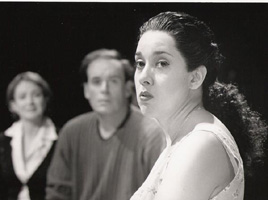 I was on the board for Screen Actors Guild for three years. I worked a lot with Actors’ Equity Association, which is the stage union, the primary thrust when I first turned professional in this business. I got politically active right away. At that time, there were very few people of color in any stage shows on Broadway. If you were a black performer, you got to do a show if there was a black show on Broadway. If there was tap dancing required, then you had a job. And if they were doing a revival of West Side Story, then all the Latinos could work. If they were doing Pacific Overtures, all the Asians could work. But other than that, they basically kept you out. We started a movement, a nontraditional casting project, and the Actors’ Equity Association and the Equal Opportunity’s community there, the EEOC … we started to picket, to institute meetings with producers from the Producers’ League to let them see our side of it. And it did work. By the end of the first three years, Broadway started becoming more integrated. Will Rogers Follies, which was a Broadway show that had predominantly Anglo dances…they said at that period of time in history, there wouldn’t be any African-Americans in the show. We proved them wrong. Stephanie Pope, Broadway singer and dancer, starred in the show and took a part that would have originally been played by a Caucasian. That was huge! We were relegated to chorus, and chorus that was ethnic specific. So things started to change. It wore on me. It was very taxing, but I am really happy that I was involved in that.
I was on the board for Screen Actors Guild for three years. I worked a lot with Actors’ Equity Association, which is the stage union, the primary thrust when I first turned professional in this business. I got politically active right away. At that time, there were very few people of color in any stage shows on Broadway. If you were a black performer, you got to do a show if there was a black show on Broadway. If there was tap dancing required, then you had a job. And if they were doing a revival of West Side Story, then all the Latinos could work. If they were doing Pacific Overtures, all the Asians could work. But other than that, they basically kept you out. We started a movement, a nontraditional casting project, and the Actors’ Equity Association and the Equal Opportunity’s community there, the EEOC … we started to picket, to institute meetings with producers from the Producers’ League to let them see our side of it. And it did work. By the end of the first three years, Broadway started becoming more integrated. Will Rogers Follies, which was a Broadway show that had predominantly Anglo dances…they said at that period of time in history, there wouldn’t be any African-Americans in the show. We proved them wrong. Stephanie Pope, Broadway singer and dancer, starred in the show and took a part that would have originally been played by a Caucasian. That was huge! We were relegated to chorus, and chorus that was ethnic specific. So things started to change. It wore on me. It was very taxing, but I am really happy that I was involved in that.
 Lastly, where do you see webisodes going in the future?
Lastly, where do you see webisodes going in the future?
Web content is going to be huge. This is going to be the wave of the future. Our show can be downloaded to your cell phone. Everything is changing.
Visit www.inthemotherhood.com
Interviewed by Kaylene Peoples
Sergey Gorobchenko – Moscow’s Leading Man Aspires to Come to a Theater Near You, Right Here in America!
Sergey Gorobchenko – Moscow’s Leading Man Aspires to Come to a Theater Near You, Right Here in America!Some people are just bi-coastal, but Sergey Gorobchenko lives on two continents. Originally from Moscow, Sergey has created a name for himself and has become a talented leading man. He has starred in several films in Moscow, including the remake of Dr. Zhivago, Boomer, The Shoemaker, Lift, and Moscow Heat. Sergey’s range as an actor is impressive. But he is not content to just entertain in Russia. His ambition is more far-reaching than that. He recently arrived in America, studied English at a college in New York, and decided to engage in film here in the United States. He met with filmmakers here who shared his vision to create films that would be about Moscow and Russian culture and the connection with Americans and American culture.
Is it difficult to become an actor in Moscow? No, not really. If this is something that’s in your heart, don’t think about how many people are involved in this industry and how many actors are around you. Just be yourself. Here in America, when someone is pursuing an acting career, they hear comments like, “You should just get a regular job. It’s going to be so hard.” Do you hear those types of comments in Russia? Many people ask me how can I work twelve hours a day. But of course if you don’t like the job, it is hard. Many of my friends wanted to come watch a taping once, just out of curiosity. They watch the final product on TV. They think it is glamorous. But when they watched me on stage, they couldn’t stay for very long. It was nothing they expected. Tell me about your education and training. I studied in the Theater Academy of Theater and Arts in St. Petersburg. I grew up during Communism in USSR. So you saw the actual shift in USSR? I know the difference. I was fifteen when everything changed. Has it changed for the better? Yes, it’s much better. There is freedom and fresh air of something new. Moscow has become very rich and opportunity-filled in a very short time. There are many theaters and production companies in Russia. This was one of the main problems before with Communism. What happened when you finished your education?
Did you encounter any obstacles in your efforts to come out here? I have some experience of life. I did go through some difficult things, but I managed it. I have to take everything into account; each minute and every day counts. Tomorrow doesn’t exist. What kind of roles do you prefer to play? All projects I have played seemed to come right on time. [I like the roles I play when I am playing them.] Do you prefer more drama, or do you like comedies? I have played comedies, dramas, family-oriented, tough gang movies, I pull from a lot of my own life experiences. I like them all. Do you have a place here in America as well as in Moscow? Yes, I have a place in America. I was out here six times this year. I mostly work in Moscow, but I can come out here if there is work for me here. Do you have an L.A. agent? I am very lucky. I have a good agent. Her name is Natalie Chase. She’s great. Where do you see Sergey in five years? I don’t really know, but sometimes I feel that dreams about the future can direct us. We have to dream. We have to work hard. If we are correct, things will happen the right way. You mentioned there are people who are doing a Russian project here in America. What is the status of that project? We are writing the script. I am helping with a lot of the ideas. Are you like a producer? Yes, I have the connection with Russia, because Russia is still closed. People in Russia can trust me. So you can bridge the gap between Russia and America. This is my bridge. I am not bridging between countries. I am not a president…. (Interrupts) But cinema reaches millions. I think movies rule all over the world. Yes, it’s very important. What are the politics involved in creating a film in Russia as opposed to creating one here in America? Have you experienced both? America is more developed; it’s more advanced. Russia today…trying to be independent and free…it’s very new. It’s not easy to change things overnight, but Russian people are very strong. There are so many independent filmmakers, guerrilla-style, shooting movies. Some are actually getting Oscars. And they don’t have to be tied to a really You can if you understand the rules. Russian people are very strong, and they want to be independent. And Russia is a very big territory. These are my roots. I cannot change them. I just want to be international. I’d like to be in connection with any country, but I have to know cultural differences and learn the languages. Any last words? Don’t worry about nationality because we are all the same. Sometimes we have to forget the bad and just turn the page. To find out more about Sergey Gorobchenko’s latest movies, visithttp://www.imdb.com/name/nm1330495/. Interviewed by Kaylene Peoples |
Joseph Domingo – San Francisco-based Fashion Designer and Atelier
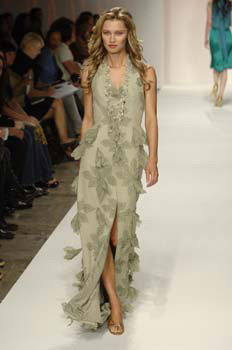 San Francisco-based fashion designer, Joseph Domingo, considers himself an atelier, specializing in custom-made clothing for both men and women. Domingo’s designs include sportswear, contemporary clothing, evening wear, and wedding gowns. Joseph has been featured on CNN, DNR, Women’s Wear Daily, California Apparel News, and he has been a huge hit at the last few Fashion Weeks. Last season’s runway show created quite a buzz, and they are still talking about it today. I recently visited his modest shop in San Francisco and saw the real scope of his designs. Originally from the Philippines, Joseph hid his desire for fashion design until he was an adult.
San Francisco-based fashion designer, Joseph Domingo, considers himself an atelier, specializing in custom-made clothing for both men and women. Domingo’s designs include sportswear, contemporary clothing, evening wear, and wedding gowns. Joseph has been featured on CNN, DNR, Women’s Wear Daily, California Apparel News, and he has been a huge hit at the last few Fashion Weeks. Last season’s runway show created quite a buzz, and they are still talking about it today. I recently visited his modest shop in San Francisco and saw the real scope of his designs. Originally from the Philippines, Joseph hid his desire for fashion design until he was an adult.“There are nine siblings and I’m the youngest of nine kids, and there are seven testosterones. You can just imagine, I could not be as expressive as I wanted to be. As a child, I had to hide my paper dolls … I had to make my own paper dolls. I had to be underneath the dining table and play on my own–pretty much hide.”
–Joseph S. Domingo–
How long have you been designing?
I’ve been designing for the past fifteen years, but I’ve had my own Atelier for the past seven years.
That’s a very interesting word, “atelier.” I know what it means, but a lot of people don’t, and it’s a very distinguishing facet of fashion design. Could you explain?
Atelier is like you having your own showroom and people come to you and have something specifically made for a certain occasion.
How did you decide to get involved in fashion design?
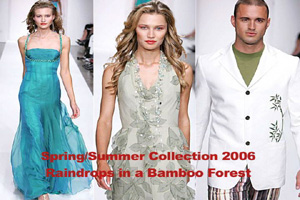 Well, it’s a long road for me because growing up, I watched a lot of beauty pageants. I liked women dressing up, and from there on I liked to sketch. I went to architecture school of design and rerouted to interior design and thereafter I ended up being a fashion designer.
Well, it’s a long road for me because growing up, I watched a lot of beauty pageants. I liked women dressing up, and from there on I liked to sketch. I went to architecture school of design and rerouted to interior design and thereafter I ended up being a fashion designer.
So you really knew what you wanted to do.
I really wanted to do this at a young age. [But didn’t have the freedom to express myself]. So I had to kind of reroute. But it was a good experience going into architecture first, then interior design, and then finally being where I really wanted to be.
Where are you from originally?
I’m originally from the Philippines. I moved here when I was a teenager. That’s why I enrolled myself into a fashion school.
What school did you go to?
I went to West Valley college, which is just a regular community college. But they have a great program, and I’m really proud of my accomplishments and what they did for me.
Now, I’ve basically seen your collections since you started showing at Fashion Week. Beautiful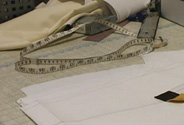 stuff. Stunning and basically shocking for a first-time showing at that. I notice it’s more like luxury wear.
stuff. Stunning and basically shocking for a first-time showing at that. I notice it’s more like luxury wear.
I wouldn’t call it couture wear. It’s more like luxury if you may call it that, based upon their price points.
Could you give me an idea of what the average item you make would cost?
Cocktail dresses start from $800 and up, depending on the intricacy of the design. I do a lot of custom clothing. Wedding dresses start from $3000 and up. It depends on the budget of each individual.
Now, you obviously have your boutique here and in San Francisco. Do you have boutiques anywhere else?
Actually not at this moment. I sell on occasions, season to season. That’s why I want to be rerouted to ready to wear sometime in the future. But most of the time people come to me on a recommendation basis, or people hear about me and say they want me to design something for them for a specific occasion.
Have the Fashion Weeks helped with that?
Absolutely! Fashion Week has been great for me, having to show three times. It’s just progressing. I have a couple of [PR Firms] now helping me out to get exposure. I’m getting quite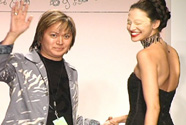 the unimaginable article here and there, and people are talking about me and hearing about me, especially the last season when I [showed at LA Fashion Week].
the unimaginable article here and there, and people are talking about me and hearing about me, especially the last season when I [showed at LA Fashion Week].
The last season was big.
It was. It was great. It’s a good thing I took the risk I took.
What was that?
 What we did for the models. It was a collaboration of my sponsor (the one responsible for the hair and makeup) to specifically focus on the clothing. We wanted to have a walking mannequin. And in order to do that, we had faceless models. He developed a kind of eye patch that blended into the skin tone, but they had the lips and the facial structure with coiffed hair.The idea being that people would initially focus on the face, wonder what’s going on, and then they would get more relaxed and focus on the clothes. And I get so much buzz about it on the different blogs and Google. It’s all over the place. It was very edgy. Some people even quoted that they had never even seen it from places like Paris, Milan, or New York, and then all of a sudden, it’s in LA. It just separates us from the norm.
What we did for the models. It was a collaboration of my sponsor (the one responsible for the hair and makeup) to specifically focus on the clothing. We wanted to have a walking mannequin. And in order to do that, we had faceless models. He developed a kind of eye patch that blended into the skin tone, but they had the lips and the facial structure with coiffed hair.The idea being that people would initially focus on the face, wonder what’s going on, and then they would get more relaxed and focus on the clothes. And I get so much buzz about it on the different blogs and Google. It’s all over the place. It was very edgy. Some people even quoted that they had never even seen it from places like Paris, Milan, or New York, and then all of a sudden, it’s in LA. It just separates us from the norm.
I like it because it was a juxtaposition between the faceless mannequin and you have this classy clothing.
Yeah it’s like a balance of things that people would think that if it’s edgy and faceless, it would be this rocker urban kind of thing. My lines are simple, having this architecture background. It goes with the flow and the consistency with gelling the whole collection together.
Highest High
My highest moment is being patted on the back or being appreciated with either the accomplishments of an individual client or a student that would just say, “You inspire me, and I would like to intern. I would like to learn more about what you do, and I heard so much about you.” That pretty much for me is a validation. Another high is reading articles here and there, especially with the industry and the professionals that said either I arrived or I’m doing a good job, or for some reason, some people even giving hints about a bad critique. I don’t even care for bad critique because I think critics are critics, good or bad. It’s better for them to talk about it. If they don’t talk about you, you don’t exist.
Lowest Low
The low point of being in this industry is having a lot of financial hardship. People think that once you’re a fashion designer…once you’re in Fashion Week…you’ve got an amount of money backing you up, but no. I’m more like self-financed, looking for investors here and there, not like I don’t have offers here and there, but I have to be really careful about it. So my low moment would be having to juggle things.
How do you get inspired for a collection?
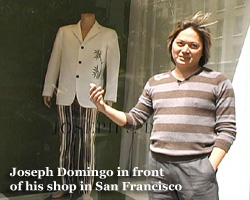 For the past three seasons, just going everywhere. The first collection was The Safari Rose, and I was trying to get into the fall. I wanted to create something that is kind of safari-ish, but I want to incorporate the femininity of it so there are roses, cabbage roses in every evening gown I made that season. And then the following collection was the Raindrops in a Bamboo Forest, which consisted of polka dots and bamboo prints. This last collection was Red and Black Equals Chocolate. I love chocolate a lot, so one time I was scribbling with a red pen and then a black pen and it become chocolate and that was my inspiration. The next season I saw this one pink magnolia in a tree, and I said, “That’s beautiful. Maybe I’ll incorporate that into the design.” So you don’t know what’s going to come out of it. It’s nature, magazines, people. All kinds of things inspire me a lot. So I encourage everybody to just keep their eyes open. You never know.
For the past three seasons, just going everywhere. The first collection was The Safari Rose, and I was trying to get into the fall. I wanted to create something that is kind of safari-ish, but I want to incorporate the femininity of it so there are roses, cabbage roses in every evening gown I made that season. And then the following collection was the Raindrops in a Bamboo Forest, which consisted of polka dots and bamboo prints. This last collection was Red and Black Equals Chocolate. I love chocolate a lot, so one time I was scribbling with a red pen and then a black pen and it become chocolate and that was my inspiration. The next season I saw this one pink magnolia in a tree, and I said, “That’s beautiful. Maybe I’ll incorporate that into the design.” So you don’t know what’s going to come out of it. It’s nature, magazines, people. All kinds of things inspire me a lot. So I encourage everybody to just keep their eyes open. You never know.
Do you have a designer that inspires you?
The three Italians, I love them so dearly. I met a couple of them…Giorgio Armani, whom I haven’t met…GianFranco Ferre, and Valentino. Those are the three great designers that I aspire to be like. Jon Franco Feri has an architectural background. Armani—the name itself describes it—and Valentino for his femininity, luxury, and ladylike designs.
I like Valentino a lot. That’s probably why I like your clothes. Last season, you did polka dots, and it was breathtaking. It reminded me of Audrey Hepburn. What was your biggest defining moment as a designer?
The defining moment is seeing your clothing being worn by a friend, or somebody famous, or hanging on a rack in a store.
I like how you managed to sneak in a little bit of culture in your designs. How do you do that so successfully?
I love traveling a lot and keep my eyes on every culture. I always think on a global level while keeping the integrity of my background and history.
Where do you see yourself in five years?
I would like to have my own store and all kinds of different collections like footwear, sunglasses, watches, etc.
You make it look very easy.
I try, but sometimes I cannot breathe. I am so busy. But this is my passion, and I just have to explore it and keep it alive.
What advice would you give an aspiring designer?
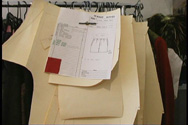 Just go for it. There is always room for everybody. Don’t surround yourself with negativity because I have been there. A lot of people can be so discouraging in this industry…either they’re colleagues of yours questioning [your decisions]…. Keep the good and throw out the negative. Surround yourself with people who support you. It’s better to be nice to people than giving them attitude, because a door won’t open otherwise. It’s a small industry, and people will talk. If you’re branded as a so-called diva, it will be hard to get in. You just have to stay grounded. Ego won’t take you anywhere.
Just go for it. There is always room for everybody. Don’t surround yourself with negativity because I have been there. A lot of people can be so discouraging in this industry…either they’re colleagues of yours questioning [your decisions]…. Keep the good and throw out the negative. Surround yourself with people who support you. It’s better to be nice to people than giving them attitude, because a door won’t open otherwise. It’s a small industry, and people will talk. If you’re branded as a so-called diva, it will be hard to get in. You just have to stay grounded. Ego won’t take you anywhere.
Visit Joseph Domingo’s website at www.josephdomingo.com. He is also available by appointment at his showroom at 808 Post Street, San Francisco, 94109 / 415-563-2007.
Interviewed by Kaylene Peoples
Son-Rise – The Miracle Continues
Book Review
Son-Rise – The Miracle Continues
Barry Neil Kaufman
T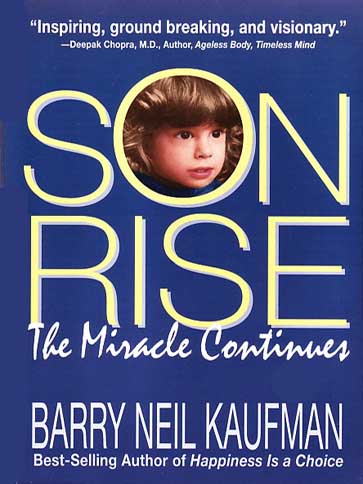 here’s nothing like a true story made into a book, made into a television movie to get one inspired, and Barry Kaufman’s Son-Risedid just that for me. This is the story of a child with autism. Barry and his wife Samahria Kaufman gave birth to Raun, who exhibited all the characteristics of a normal child. He was developing normally, but at four weeks old, Raun battled with an ear infection that spread thoughout his nose and throat, Raun was treated with antibiotics, which caused a severe dehydration, eventually landing him in the hospital for several days. The treatment had severe side effects and the doctors feared he would have permanent hearing loss. Finally, the Kaufmans were allowed to take their infant home. At first, Raun developed normally, but eventually he started exhibiting unusual behavior, giving Samahria and Barry cause for concern. He was detached and shunned all human touch. Raun was eventually diagnosed as severely autistic.
here’s nothing like a true story made into a book, made into a television movie to get one inspired, and Barry Kaufman’s Son-Risedid just that for me. This is the story of a child with autism. Barry and his wife Samahria Kaufman gave birth to Raun, who exhibited all the characteristics of a normal child. He was developing normally, but at four weeks old, Raun battled with an ear infection that spread thoughout his nose and throat, Raun was treated with antibiotics, which caused a severe dehydration, eventually landing him in the hospital for several days. The treatment had severe side effects and the doctors feared he would have permanent hearing loss. Finally, the Kaufmans were allowed to take their infant home. At first, Raun developed normally, but eventually he started exhibiting unusual behavior, giving Samahria and Barry cause for concern. He was detached and shunned all human touch. Raun was eventually diagnosed as severely autistic.
Samahria and Barry went through a series of tests only to be told there was no cure. The best they could hope for was that maybe Raun would eventually learn a few skills, like dressing himself and uttering robotic responses. But eventually he would be institutionalized. Against the odds, Samahria decided to take action, ignoring the doctor’s advice. She decided that she was going to reach her son, no matter what it took. She had no expectations, only acceptance—she wanted to connect with her child. The best way that she knew how to do that was to enter his world in hopes that he would feel safe enough to eventually enter hers.
Samahria spent every waking hour mimicking Raun’s behavior. If he spun a plate, she spun a plate. If he threw his food, she threw her food. If he jumped up and down, so did she. And she did all this in the tiny bathroom of their home. She chose the bathroom because there wasn’t much in there that Raun could destroy, and it was a place where they always had their interaction. Eventually, Raun began to respond. The Kaufman family eventually all got involved, including Raun’s two older sisters, Byrn and Thea. The Kaufmans elicited help from volunteers to get involved with treating their son. And with time, patience, and a few setbacks, Raun began to develop like a toddler and eventually showed no signs of autism.
The doctors who had diagnosed him as autistic were astounded. Caseworkers and teachers of special education programs came to observe Raun’s daily routine. In their opinion, it was a miracle.
What moved me the most about Son-Rise, The Miracle Continues is the amount of love this family had for their child. They gave up a lot to be able to connect with him and to be in his world. They also took a big chance, not knowing the outcome. Their methods were unorthodox, but safe. There were no drugs involved, only dietary changes.
The Kaufmans eventually created their own institute, showing parents how to work with their autistic children—the main medicine being unconditional love and acceptance. And to this day, The Option Institute has helped thousands of children rise above autism, as well as a host of other related and non-related disorders. Raun, who is now completely recovered, is the director of The Option Institute.
Son-Rise was first published over thirty years ago. A television movie about autism was based on that book. It offered hope to those families who were told there was no cure for autism. The newly published Son-Rise, The Miracle Continues has three parts. The first part is about the struggle and the eventual success of Raun Kaufman. Part two of this book explores Raun’s development from childhood at age four to becoming a young adult.
Part three interviews five other families who went through similar circumstances and were victorious over their child’s diagnosis. All five families have inspiring success stories, and their once unreachable children are now happy, thriving, and functional beings. These testimonies offer hope along with the limitless opportunities.
This is a must read. I read the 346-page book from cover to cover in just 48 hours, unable to put it down. Autism is a growing epidemic, and could affect you or someone you know. Son-Rise, The Miracle Continues teaches us to be more accepting of people’s differences. It teaches us to love unconditionally, and it is a true testimony to what the human mind is really capable of.
Son-Rise, The Miracle Continues can be purchased at most bookstores everywhere.
Reviewed by Kaylene Peoples
Recommended Reading: One Child by Torey L. Hayden, Copyright 1980

 When special-education teacher Torey Hayden wrote her first bookOne Child almost two decades ago, she created an international bestseller. Her intensely moving true story of Sheila, a silent, profoundly disturbed little six-year-old girl, touched millions. From every corner of the world came letters from readers wanting to know more about the troubled child who had come into Torey Hayden’s class as a “hopeless case,” and emerged as the very symbol of eternal hope within the human spirit.
When special-education teacher Torey Hayden wrote her first bookOne Child almost two decades ago, she created an international bestseller. Her intensely moving true story of Sheila, a silent, profoundly disturbed little six-year-old girl, touched millions. From every corner of the world came letters from readers wanting to know more about the troubled child who had come into Torey Hayden’s class as a “hopeless case,” and emerged as the very symbol of eternal hope within the human spirit.
The Tiger’s Child by Torey L. Hayden, Copyright 1995, the sequel toOne Child.
NONFICTION
Description by Amazon.com
Kaylene Peoples, Founder and Editor in Chief – Up Close and Personal Reflections of Agenda Magazine
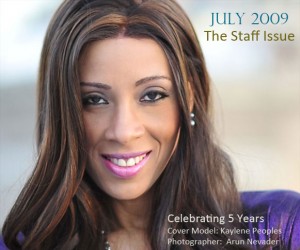
It’s been five years since the start ofAgenda Magazine, www.agendamag.com. That very first issue back in summer 2004 featured actress Bai Ling on the cover as well as a list of prestigious fashion professionals: J. Alexander (ANTM), Coco Kliks (designer), Sue Wong, and more. We were still feeling our way around this online publishing world. Being the first fashion webzine to stream video, that trend caught on like wildfire. And as you can see, it’s everywhere now. We’ve featured now famous designers (Rami Kashou) who at the time were just starting their careers, and we’ve seen some (Anand Jon) rise to the top then fall from grace.
Agenda Magazine‘s list of distinguished interviewees include handbag, fashion, and jewelry designers, actors, actresses, musicians, kitchen designers, chefs, wedding gown designers, doctors, autism and breast cancer survivors, entertainment, fitness, dance companies, beauty and fashion professionals. And many contributors have come and gone, but their legacy will always live on in Agenda. Those who’ve contributed regularly in the past are as follows: Devino Tricoche (photographer), Natalie Martin (political writer), Patricia Lee (writer), Kevin Foster (writer), Ali Saam (spokesperson) and Sherman Hill (columnist). Each has gone on to successfully pursue other avenues.
What was my highest high?
I ask everyone I interview that very same question. And honestly, I can’t even answer that question because there have been so many highs with thismagazine. I could say the highest high was getting this issue together, or I could say the same thing about our Spring 2005 issue. Every issue has been a high; and once that issue is done, it’s on to the next. I think the highs are the fact that our readers love us and they’re loyal.
Highlights
Hurricane Katrina hit, and as we know, several people were devastated by this natural disaster. Photojournalist (Leslie Lormann) was invited to go on the Oprah show because of her photo-journalistic spread that we ran in the magazine. And we’re very proud of her for that. She put herself out on the limb to contribute to such a horrifying situation. She put her life in danger to document what was actually going on over there.
Raun Kaufman, an autism spectrum survivor, was interviewed back in Spring 2007. He continues to help children with autism, cerebral palsy, and Down’s syndrome recover and lead normal lives. We did a pod cast, and a lot of people started researching alternative methods of recovery for their affected children.
Pooja Batra (Bollywood Star), Apollonia Kotera, Keith Munyan, Sheryl Lee Ralph (HIV awareness), non-invasive plastic surgeons, celebrity stylists offering tips to the average woman, eco-friendly designers, and everyday heroes that we just don’t hear about have all graced our pages.
Lowest Low
The lowest low has been time. We get so many requests to interview, run editorials, or feature things in the magazine, and there’s just not enough time. There weren’t enough issues to actually accommodate all those who have been asking. Agenda Magazine has been quarterly for five years. That means only four issues a year. Those issues were jam-packed. But unlike a monthly or bi-monthly, we had to really select carefully what actually went into each issue. That was something that I wanted to change, I wanted to rectify this year. We’re going to be putting out monthly issues, and we will be trying our best to focus more on things that we haven’t been able to feature in the past.
Green fashion has been a very big thing for the magazine. We are trying to stay proactive. And we’re trying to do the right thing in this crazy world that we’re in where our natural resources are being depleted and our economy is in a mess. By supporting the green movement, we feel that maybe our readers will start buying eco-friendly fashion, eco-friendly cars, and maybe the rest of the world will follow suit.
Agenda Magazine has a spokesmodel. How did I come up with that choice?
Lindy Flowers is our spokesmodel who came onboard about a year ago. She’s a mother of two and is still modeling after ten years. I felt she really represented the real world as opposed to someone who is just starting to model. Lindy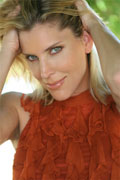 continues to model and is working almost daily. She just recently did a Volkswagen campaign in Europe. I think she represents what modeling should be. You shouldn’t have to stop modeling when you turn 24. They say if you’re 12-15, you’re just probably the right age to start modeling. If you’re 18 starting, you just might be over the hill; and by the time you’re 24, your career is over. Well, I don’t know if I agree with that. I’d like to be one to help change that, and I think Lindy is the perfect representation of what modeling should be. Because, you know what? We’re living longer. We’re not dying off at 55 or 60 anymore. This world is getting older. I believe there are those who want to see more mature models. Fashion comes in all shapes and ages.
continues to model and is working almost daily. She just recently did a Volkswagen campaign in Europe. I think she represents what modeling should be. You shouldn’t have to stop modeling when you turn 24. They say if you’re 12-15, you’re just probably the right age to start modeling. If you’re 18 starting, you just might be over the hill; and by the time you’re 24, your career is over. Well, I don’t know if I agree with that. I’d like to be one to help change that, and I think Lindy is the perfect representation of what modeling should be. Because, you know what? We’re living longer. We’re not dying off at 55 or 60 anymore. This world is getting older. I believe there are those who want to see more mature models. Fashion comes in all shapes and ages.
Where Do I See Agenda Magazine in five years?
I see Agenda Magazine on the shelf in five years. I see it being a voice of fashion and human interest in five years. I don’t see it being gone in five years. I definitely see the magazine thriving. And I feel that it will continue to grow.
One thing that was born out of the magazine is our non-profit Agendafoundation.org. We started the filing process over three, years ago and now we are a 501(c) 3. It is an accelerated film school for foster youth. We are trying to bring some consciousness to this particular group of children.
How did the magazine come to be?
You know it’s funny, because the magazine came to be based upon my own desires, really. I’m an entertainer, jazz singer/flautist, I used to model, and I’m a filmmaker. That’s where the streaming media came in—that’s where the fashion  came in, and one of our most recent additions, the Indie Hotspot, which caters to independent musicians and film—and that’s where that section came in. I’ve been an entertainer for a long time, and it has been a struggle to make it in this industry. And I know that a lot of people also struggle. If I did, I know they did. The answers are not always so easy when you’re an entertainer—and an independent one at that when you don’t have a label. And there’s really only a small percent that actually get signed to a record label. It’s so small that it’s laughable. There are more artists out there than you know. With the advent of Myspace, and now Facebook and Twitter, and some of these other online outlets, a lot of that talent is now finally being heard. But I thought that it would be very proactive if we actually did something, too, to help the cause of the independent entertainer, singer, actor, filmmaker. That’s why the Indie Hotspot was born, as a result creating another demographic. We ended up bringing in the 18-30-something male readership by introducing that section.
came in, and one of our most recent additions, the Indie Hotspot, which caters to independent musicians and film—and that’s where that section came in. I’ve been an entertainer for a long time, and it has been a struggle to make it in this industry. And I know that a lot of people also struggle. If I did, I know they did. The answers are not always so easy when you’re an entertainer—and an independent one at that when you don’t have a label. And there’s really only a small percent that actually get signed to a record label. It’s so small that it’s laughable. There are more artists out there than you know. With the advent of Myspace, and now Facebook and Twitter, and some of these other online outlets, a lot of that talent is now finally being heard. But I thought that it would be very proactive if we actually did something, too, to help the cause of the independent entertainer, singer, actor, filmmaker. That’s why the Indie Hotspot was born, as a result creating another demographic. We ended up bringing in the 18-30-something male readership by introducing that section.
What advice would I give to someone trying to start his/her own online magazine?
Content is the biggest thing that will keep your magazine going. We’ve never had a problem with content here at Agenda Magazine.There’s plenty of it. The secret for me was I just wrote about what I loved, or I let our writers write about what they loved. As a result, the magazine has thrived. Instead of chasing theaudience, I let the audience chase us. And that’s probably the best advice I could give to someone who wants to start his/her own online magazine. Find the things that you’re interested in. Find the topics that you love and that you’re passionate about and write about those because those will never go away, and there’s always something to write about. But if you’re chasing an idea that you’re not 100% sold on or even sure about, you’re sure to fail. It’s better to just go with what you feel and what you know and be eager and curious to learn more. So here’s to the next five years!
Kaylene Peoples, Agenda Magazine’s Founder and Editor in Chief
To Learn more about Kaylene, visit:www.myspace.com/kaylenepeoples. Visit Agenda atwww.myspace.com/agendamagazine andwww.twitter.com/agendamag. To give a donation to Agenda Foundation, visit www.agendafoundation.org.
